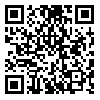BibTeX | RIS | EndNote | Medlars | ProCite | Reference Manager | RefWorks
Send citation to:
URL: http://refahj.uswr.ac.ir/article-1-2086-en.html
Objectives: The concept of economical power, due to its nature and context is almost subject to all problems and subjects in human, economical and social areas including social deviance and its different aspects and forms. Regarding these effects, the aim of the present article is to investigate and identify the relationship between poverty and narcotics and alcoholic drinks abuse. There for, after clarifying the concept of economical poverty and social delinquency, the related theories were gathered and the theoretical framework of the research was specified. According to this framework causal model of the research including independent variety, mid variety and the dependent variety were specified. it should be noticed that all the variants in the causal model were extracted from the theories. Method: This study was performed through filed method and survey technique among 400 ordinary youths (18-25 year old) in Tehran and Shemiranat. The factor analysis method was used for the narcotics abuse item having one factor. The instruments used were questionnaire and an interview which was performed by the questioners. The data obtained, was analyzed descriptively and deductively through the spss software package. After gathering data, 24 of the imperfect questioners were omitted and the final analysis was performed according to a group of 376 samples. In order to choose areas of Tehran representing high, low and middle classes, we divided it according to 22 local areas of Tehran’s municipality into three main areas: North (representing the high class of the society), middle (representing middle classes of society) and south(representing low class of the society). then from each area 2 parts and from each part,1 quarter were chosen including: from the north, area 1 (including tajrish and niavaran quarters),and 3 (including kavoosie and hasan abad quarters), from the middle, area 6 (including amir abad and bahjat abad quarters) and area 12 (including molavi and khani abad), from the south area 16 (including nazi abad and mohamad abad quarters) and area 19 (including khani abade no and abdol abad).after choosing each quarter, 3 spread of the variants. The unit of analysis in this research was one person and the analysis level was fragment. Findings: The finding revealed that although there is no direct link between the two variables of economical poverty and narcotics and alcohilic drink abuse,but the economical poverty can resultin alcohilic drink and narcotics abuse, by influencing middle variables. Results achieved through symbiosis tests revealed that the variants of social injustice (./110), abusement culture (./603), feeling of despair (./128), hopelessness (./151) and social dissatisfaction have some positive and meaningful link to narcotics abuse. So that by an increase of these variants among youthes, this sort of harmful behavior was also increased among them. The results revealed that there exists a meaningful negative link between the social capital and drugs and narcotics abuse. (./281). Therefore if people have higher social capital, they would be less likely to have tendency toward these abuses. The result of analyzing the relationship between gender and alcoholic drinks and narcotics abuse revealed that there exists an average difference between males and females. in other words, comparing the grades of these two groups revealed that men have more tendency toward alcoholic drinks and narcotics abuse than women. Results: The results revealed that the variables of cultural of delinquency, social capital and hopelesness have the most effect on alcohlic drinks and narcotics abuse. Cultural of delinquency and hopelesness result in the incries in alcohilic drink and narcotics abuse and the incrise social capital results in the decrise of theire abuse among youthes.
Received: 2015/09/9 | Accepted: 2015/09/9 | Published: 2015/09/9
| Rights and permissions | |
 |
This work is licensed under a Creative Commons Attribution-NonCommercial 4.0 International License. |





